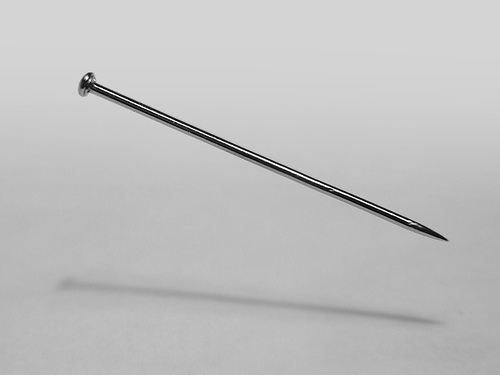When someone is really "Pinning" their shots you can hear the difference
The "thud stroke," now that's a new one I've never heard of before.
"Pinning" is when you contact the cue-ball with the edge of your cue with a slightly ascending blow (top for "draw," and bottom for "follow").....hardly driving the cue ball into the cloth (that would be more like a "jump shot").
When someone is really "Pinning" their shots you can hear the difference.....Efren does it so well it sounds like his cue is broken on occasion.
The key to accuracy for me has always been how well I'm accelerating to the "cue ball target" with the edge of my tip (the center edge to TOI to be exact). This "Pin's" the cue ball and the path it takes is very precise......very precise indeed. 'The Game is the Teacher'

The "thud stroke," now that's a new one I've never heard of before.
"Pinning" is when you contact the cue-ball with the edge of your cue with a slightly ascending blow (top for "draw," and bottom for "follow").....hardly driving the cue ball into the cloth (that would be more like a "jump shot").
When someone is really "Pinning" their shots you can hear the difference.....Efren does it so well it sounds like his cue is broken on occasion.
The key to accuracy for me has always been how well I'm accelerating to the "cue ball target" with the edge of my tip (the center edge to TOI to be exact). This "Pin's" the cue ball and the path it takes is very precise......very precise indeed. 'The Game is the Teacher'

I just recovered last night from a 3 day slump. Boy... It was bad! I was embarrassed even though I was alone. I got out of as fast as the snap of a finger. Boy... did I get out of it! I tried something I'd done before in this situation.
I usually use a stroke similiarly to one that C.J refers to as a "pin" stroke, although I'm not trying to drive the ball into the cloth. I am; however, trying to hit the ball like I'm slicing through butter. As in the past, I thought maybe I was getting loose and lazy with it. Basically; It was getting stale. A drastic change was needed.
So I started hitting the ball with my "Thud" stroke. What's that? Well; it's the exact opposite of hitting the ball like I'm trying to slice through butter. It's blunt, with less of a follow through. It feels like if I do it 5 times my tip is going to mushroom. It sounds like a THUD!
I'm sure my "THUD" stroke will eventually get stale and I'll have to start moving back to to my quasi- pin stroke, but my "Thud" stroke sure is working now.
I'm highly cognizant that many of my posts make no sense to almost anyone but me. I'm also highly cognizant that the reason for this may be that I lack any sense whatsoever; but, magnanimous and courageous guy I am, I'll endure the slings and arrows if it helps just one other senseless guy like me.
